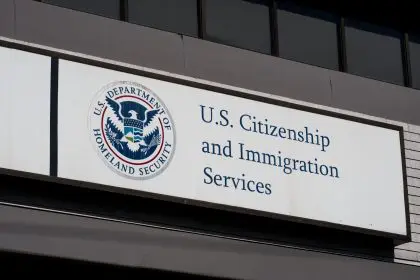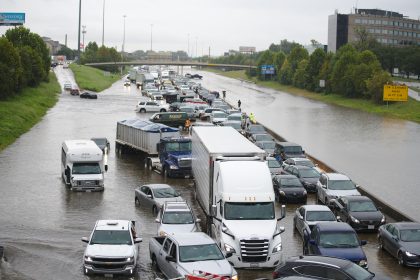President Donald Trump traveled to Central Texas on Thursday following the region’s most devastating flood disaster in recent memory, which has already claimed over 120 lives and left more than 170 people missing. In a move that surprised many, Trump reversed his previous plan to dismantle FEMA, calling instead for stronger partnerships between federal and state emergency response agencies.
The dramatic policy shift comes as Texas faces unprecedented destruction from flooding that has overwhelmed dozens of counties across the central part of the state.
A crisis that shook Texas
The flooding, which began after 10 consecutive days of torrential rains, has overwhelmed dozens of counties across Central Texas. Rivers surged beyond historic levels, wiping out bridges, destroying entire neighborhoods, and forcing tens of thousands to evacuate.
Emergency crews continue to search for survivors as water levels slowly recede. The Blanco, Guadalupe, and Brazos Rivers experienced record-breaking swells, with some towns receiving over 18 inches of rain within 72 hours.
Entire communities in Hays, Bastrop, and Travis counties have been left without power, clean water, or access to roads. “This is unlike anything we’ve seen in decades,” one state official said. “The scale of destruction is massive — homes, hospitals, schools — gone.”
Trump’s dramatic policy reversal
Arriving by helicopter to one of the hardest-hit towns, Trump met with displaced families, surveyed flood damage, and addressed a crowd of emergency workers and local officials. During his remarks, he expressed deep sympathy and praised first responders, saying, “The heart of Texas is strong — and America is with you.”
But the biggest headline came when Trump publicly walked back his earlier push to downsize or phase out FEMA, the Federal Emergency Management Agency. “We’ve seen how critical fast, effective response is in times like this,” Trump said.
“From now on, FEMA will remain, but in closer coordination with our state leaders, giving them the tools they need faster — and with less red tape.” This shift marks a dramatic change in tone from just months ago, when Trump had floated plans to decentralize FEMA responsibilities.
A hybrid model emerges
Thursday’s announcement suggests a hybrid model could be on the horizon — where FEMA’s resources remain available but states take a lead role in execution. This approach would maintain federal disaster funding and expertise while giving states more control over response operations.
The president’s reversal represents a significant departure from his earlier stance that federal disaster response was too bureaucratic and expensive. Instead, Trump now appears to recognize the critical role federal agencies play in major disasters.
Political implications and reactions
Trump’s pivot may reflect the political urgency of the moment. With Texas being a key battleground state and voters watching federal responses closely, the president’s decision to reinforce FEMA’s role could be aimed at solidifying support across party lines.
Some Democrats cautiously welcomed the shift. “If it means more help on the ground, sooner, then we’ll work with it,” said one state lawmaker. Still, critics note FEMA’s past delays and the administration’s earlier push for budget cuts may complicate recovery efforts.
In local communities, however, the focus remains on rescue and rebuilding. “We just want water, electricity, and our loved ones found,” said a woman searching for her elderly parents in a devastated suburb outside Austin.
The human cost continues
The death toll continues to rise as search and rescue operations expand across the affected region. Many families remain separated, with communication networks down across large areas. Temporary shelters are housing thousands of displaced residents, many of whom have lost everything.
The economic impact is also staggering, with preliminary damage estimates reaching into the billions. Agricultural losses alone are expected to devastate local farming communities that depend on seasonal crops now destroyed by floodwaters.
Why this moment matters
This disaster represents more than just a weather event — it’s a political and human crisis that blends climate reality with emergency response accountability. Extreme weather events are accelerating, and Trump’s response signals possible new directions for national disaster policy.
The president’s actions demonstrate how quickly political positions can shift when faced with immediate human need and political pressure. His reversal on FEMA suggests recognition that federal disaster response capabilities are essential, regardless of ideological preferences for smaller government.
Looking ahead
Texas will be rebuilding for months, if not years, making the effectiveness of this new federal-state partnership crucial for recovery success. FEMA’s deployment timeline and transparency will be closely watched, along with new state-federal funding announcements.
Long-term rebuilding strategy, especially for uninsured residents, will test whether this hybrid model can deliver better results than traditional federal disaster response. The effectiveness of this approach could influence how the administration handles future disasters nationwide.
The broader implications
Trump’s FEMA reversal could reshape federal emergency management policy for years to come. If the hybrid model proves successful in Texas, it might become the template for future disaster responses across the country.
The disaster also highlights the growing challenge of extreme weather events and the need for robust federal response capabilities, regardless of political ideology about the size and role of government.
Bottom line? Trump’s surprise reversal on FEMA plans after the devastating Texas floods represents a significant policy shift driven by immediate human need and political reality. The president’s new hybrid approach to federal disaster response will be tested as Texas begins its long recovery process from this unprecedented natural disaster.















